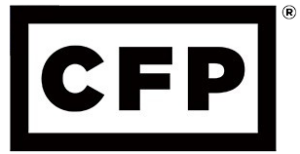Upcoming Changes For Worker Bees
The SECURE 2.0 Act has been a long time coming since the original version debuted in 2019. In fact, 2.0 was expected to pass in 2021 and I even wrote a blog about it’s perspective changes… but nothing happened! Finally as of December 2022 – it’s law, and vaguely what we expected. The legislation is primarily meant to strengthen Americans’ ability to retire by enhancing savings options by building off of the original SECURE Act. You may not remember the original SECURE Act by name, but if you inherited a parent’s account recently, you may have felt it’s impact for how it required that most non-spouse beneficiaries of an IRA distribute the account within 10 years vs their lifetime. It also allowed workplace saving plans to offer annuities, which you may have noticed as an option in your most recent open enrollment review.
The SECURE 2.0 Act follow up further expands on these original changes, but also addresses a lot of other circumstantial tidbits that don’t impact the majority. To me, it feels like these updates were shoehorned in because they’d never be priority enough to create law as a one-off. And while that’s fine, it makes the Act a bit mind boggling to absorb given the amount of directions it goes in. So for that reason, we’re going to focus on the changes that impact the majority so we don’t get bogged down by the changes that seem extremely situational.
Lastly, be aware that many updates aren’t immediately in effect which also makes this confusing. The changes will be rolled out over time. I’ll be sure to underline the dates for anything not immediately impacting us.
1. Automatic enrollment, incentives, and automatic plan portability.
Starting in 2025, new 401(k) and 403(b) plans will automatically enroll eligible employees, starting at a contribution rate of at least 3% but no more than 10%. Each year thereafter the plan will automatically increase the contribution by 1% until reaching a max of 15%. Employers can also provide de minimus incentives to encourage plan participation, like Dunkin’ Donuts gifts cards.
It also permits retirement plan service providers to offer plan sponsors automatic portability services, transferring an employee’s low balance retirement accounts to a new plan when they change jobs. These changes are based in studies that people participated in employee savings plans materially more when they had to opt-out of the plan vs opt-in to the plan. And there is hope that the easy portability will keep savings in motion vs incentizing a cash-out which comes with taxes and penalty.
And to rectify the issues of poor portability in the past, by 2025, SECURE 2.0 will establish an online searchable database that will allow a participant or beneficiary to search for contact information for plan administrators of plans in which the participant or beneficiary may have a benefit. Plans will be required to share information with the Department of Labor to be included in the database.
2. Emergency savings for certain retirement plans.
Defined contribution plans (such as 401(k) or 403(b)) will have a new emergency savings account feature. Essentially, non-highly compensated employees will be able to make up to $2,500 annual contributions to Roth-style accounts starting in 2024. The first 4 withdrawals in a year would be tax-free and penalty-free. Contributions may also be eligible for an employer match. The goal is to encourage plan participants to save for short-term and unexpected expenses. I think this is great as I routinely see savers contribute to retirement accounts and find themselves illiquid for non-retirement goals. Opportunities to fund a downpayment, bridge college costs, etc become a problem despite having plenty saved in a 401(k). I look forward to seeing how this unfolds and if employers add it to their plans.
3. Student loan debt.
Starting in 2024, employers will be able to “match” employee student loan payments with matching payments to a retirement account, giving workers an extra incentive to save while paying off educational loans.
4. Overstuffed 529 Plans can be Rolled Over for New Use.
After 15 years, unused 529 plan assets can be rolled over to a Roth IRA for the beneficiary, subject to annual Roth contribution limits ($6,500/yr in 2023 + $1,000 catch-up if age 50+) and an aggregate lifetime limit of $35,000. The rollover is treated as a contribution towards the annual Roth IRA contribution limit.
5. Qualified longevity annuity contracts (QLACs) are expanding.
SECURE Act allowed for annuities to be folded into retirement plan as a way to create a self-funded lifetime pension income vs relying solely on a bucket of savings. Enter QLACs, which are deferred income annuities purchased with retirement funds typically held in an IRA or 401(k) that begin payments on or before age 85. The dollar limitation for premiums have increased to $200,000 from $145,000 starting January 1, 2023. The law also eliminates a previous requirement that limited premiums to 25% of an individual’s retirement account balance.
6. Saver’s Match
The “Saver’s Match” is a tax credit equal to 50% of an IRA, ABLE, or retirement plan contribution up to $2,000 per individual. It’s only available for very low-income savers. The match starts phasing out at $41,000 for joint taxpayers and $20,500 for single taxpayers. The update from 2.0 is that the match will no longer pay out as a tax-credit/refund, but instead pay directly into the plan itself. The change starts 2027.
While SECURE 2.0 provides increased opportunities to save for retirement, everyone’s financial situation is different. Powwow is here to help if you’d like to see how these updates impact your plan.





This Post Has One Comment
Pingback: All you need to know about 2025 Tax Adjustments to Premiums, COLAs, Brackets and Thresholds - Powwow, LLC